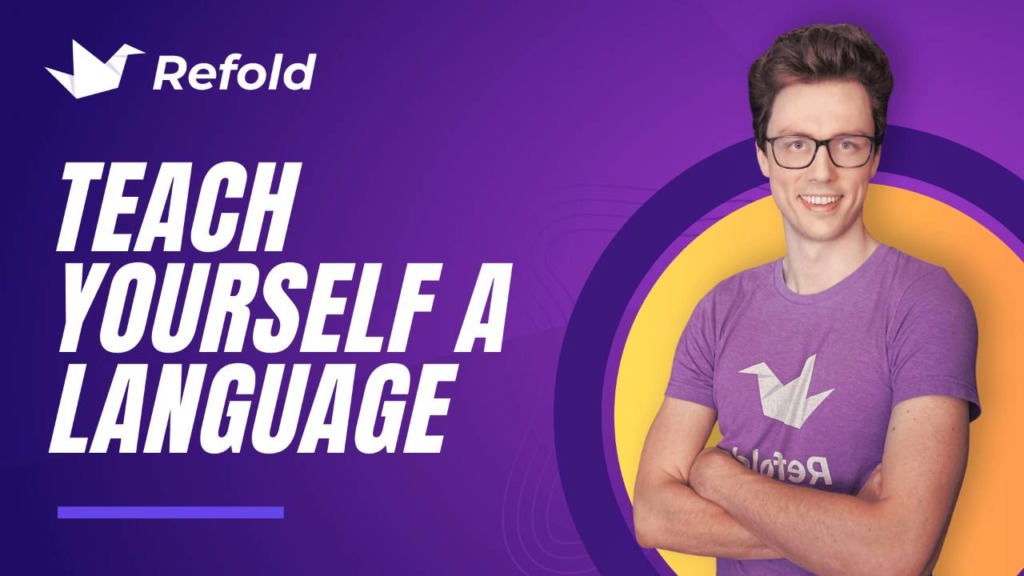The goal of Stage 2 is to go from level 1 comprehension to level 5 comprehension within a limited domain. Children achieve this exclusively through listening, but as adults, we can accelerate this process by combining reading and listening.
Reading and listening are fundamental skills that reinforce each other. Reading improves your vocabulary and will help you parse words in your listening practice. Listening improves reading by teaching you what words sound like. This increases your reading speed because you’ll stop needing to sound out words letter-by-letter, and it also improves your accent when you eventually start speaking.
So far, you’ve probably been listening to your TL but not reading. Your first goal in this stage is to catch your reading ability up to your listening ability so that you can activate the feedback loop between the two.
Choosing What to Read
The ideal content is enjoyable, comprehensible, and language dense.
Enjoyable
We’ve talked about how important it is to enjoy your immersion material so that it’s something you want to spend time with, rather than something you dread.
Comprehensible
Using the comprehensibility factors, we can optimize comprehension along multiple dimensions by choosing a serialized TV show that has matching subtitles, and which is aimed at younger audiences.
TV shows generally contain only dialogue and are written using mostly simple grammar. This ensures a small range of vocabulary and grammar, which will help you build your comprehension quickly.
They also provide visual context (which books do not), audio (which comics do not), and more narrative predictability than movies, because you become familiar with the characters and storyline.
When you’re a beginner, the most important criteria when choosing a TV show for reading is that the subtitles match the audio word-for-word. Later on, when you can easily understand the difference between subtitles and audio, then you can use mismatched subtitles.
For native shows, finding matching subtitles is easy. If they have subtitles at all, then they should mostly match.
However, for dubbed shows, finding matching subtitles is more difficult. Generally, the subtitles for dubbed shows do not match the dubbed audio because the subtitles are translations of the original meaning while the dubs are rephrasings. When searching for a dubbed show to read, look for subtitle tracks labeled “CC” (closed captions). These should match the audio. If you can’t find matching subtitles for a show you can still watch them during free-flow immersion.
Ideally, you want to start with TV shows aimed at audiences aged 7-15 because these will be more comprehensible than shows aimed at adult audiences. However, this kind of content can be difficult to find with matching subtitles. If you can’t find easier content, then jump straight to content aimed at adults. Your learning curve will be steeper, but you’ll get through it.
Language Dense
Language density is a term that describes how many unique words you are exposed to in a given amount of time.
For example, Dr. Seuss’s book Green Eggs and Ham consists of only 50 words. While you can probably read it pretty quickly, you would be exposed to significantly more words if you spent the same amount of time reading the first few pages of Matilda by Roald Dahl.
Books and shows for toddlers typically have very low language density. Some shows for older audiences can be low density as well. For example, some types of action shows have very long, very elaborate fight scenes and car chases, which contain little to no dialog.
The ideal amount of language density is “enough”. In general, denser content is more efficient, but balance that against what you’re interested in.
3-Channel Reading
In this stage, the form of intensive immersion that you’re going to be doing is reading a TV show.
Reading a TV show is straightforward, although not always easy. The idea is to pause before or after each line of spoken dialogue, read the sentence, and then continue.
If you are using Netflix, then the extension Language Learning with Netflix has a built-in autopause feature for this exact exercise.
If you are using a different streaming service, you will need to pause manually.
If you have the video and subtitle files on your computer and are watching them locally, you can use MPV and this script for auto-pausing.
What to Focus On
For each sentence you read, the goal is to try to understand it. Treat it like a puzzle game where you are decoding the meaning. Lookup unknown words in a bilingual dictionary and attempt to puzzle through the meaning of the sentence.
In the beginning, most of these puzzles will be too hard to solve. When there are three or more unknown words in a sentence, you probably won’t be able to figure out the meaning, even with lookups. That’s OK! Your brain simply is not ready for the sentence yet. For these sentences, it’s fine to look up all the words if you feel motivated, but it’s also fine to skip them and move on to the next line.
This reading process is also a good opportunity to choose what to study in the SRS. This process is called “sentence mining” and it’s explained in the next article.
Free-Flow Immersion
In addition to the intensive reading immersion, also do free-flow immersion. Doing both allows you to capitalize on the knowledge you gain from reading and convert it into acquired language.
Make sure to choose two pieces that are in the same domain. By keeping them in the same domain, you guarantee that your intensive reading will assist in building comprehension of the free-flow content.
At this stage, whether or not to use subtitles for free-flow immersion is a personal choice. Subtitles have the benefit of removing the ambiguity of the audio which increases comprehension, but some people find themselves so distracted by subtitles that they can’t turn off their analytical mind and fully enjoy the content. Try out both methods to see what you like.
While you should not be constantly interrupting your free-flow immersion with dictionary lookups, it’s fine to look up a word here and there.
Use your free-flow immersion time to explore new shows and see what you like. If you don’t like it after a few episodes, just stop watching.
Feel free to reuse shows you’ve already free-flow immersed with for intensive immersion. On your first pass, you’ll miss a lot of the details. Intensively immersing in a free-flow show is fun because you get to answer the questions from your first watch.
How Much Time
With language learning, the equation is simple: the more time you spend immersing, the faster you improve.
From this point forward, you should be looking for opportunities in your life to immerse with TL content instead of your native language (NL). If you like to binge Netflix on the weekends, then turn that binging into immersion time.
Balancing Intensive and Free-Flow
When getting started with reading, it can be pretty tough. Try to do intensive reading when you have the most energy and focus. You should aim for 30 minutes per day, but if you are struggling, start with 10 minutes per day and gradually build up to 30. The remainder of your active immersion time should be spent on free-flow immersion.
Bare Minimum
For very foreign languages (e.g. English → Arabic), we recommend at least two hours per day of focused immersion: 30 minutes intensive, 90 minutes free-flow.
For closer languages (e.g. English → Italian), we recommend at least 1 hour per day of focused immersion: 30 minutes intensive, 30 minutes free-flow.
The numbers above do not include passive listening or SRS study.
Remember, these are bare minimums. The more active immersion you do, the faster you will level up, so we encourage you to do as much as you can reasonably fit into your life without making it a chore.
Always keep the enjoyment factor in mind—it’s more efficient to do a bit less each day than to go all in, burn out, and quit entirely. Remember, efficiency doesn’t matter if you never finish.
Passive Listening
Listening comprehension will typically increase more slowly than reading comprehension. To ensure that your listening comprehension has a chance to keep up, continue to listen to previously watched shows when doing mindless tasks.
Passively listening to shows that you’ve consumed intensively will be most beneficial, but you may not have enough content to listen to. Supplement with shows that you have watched free-flow.
Level Up
You are ready to move on to Stage 2B when you have level 3 comprehension while reading an episode of a TV show. This should be an episode that you’ve never seen before, though it can be part of a series you have been watching.
To evaluate your comprehension, watch the episode line-by-line, read the subtitles, but don’t do any lookups. You should be able to:
- Recognize 50% of the words being used.
That doesn’t mean that you understand or know these words, only that you get the sense that you’ve heard/seen them before.
- Occasionally understand entire sentences.
- Follow the plot points of the story, although the details will still be a mystery.





